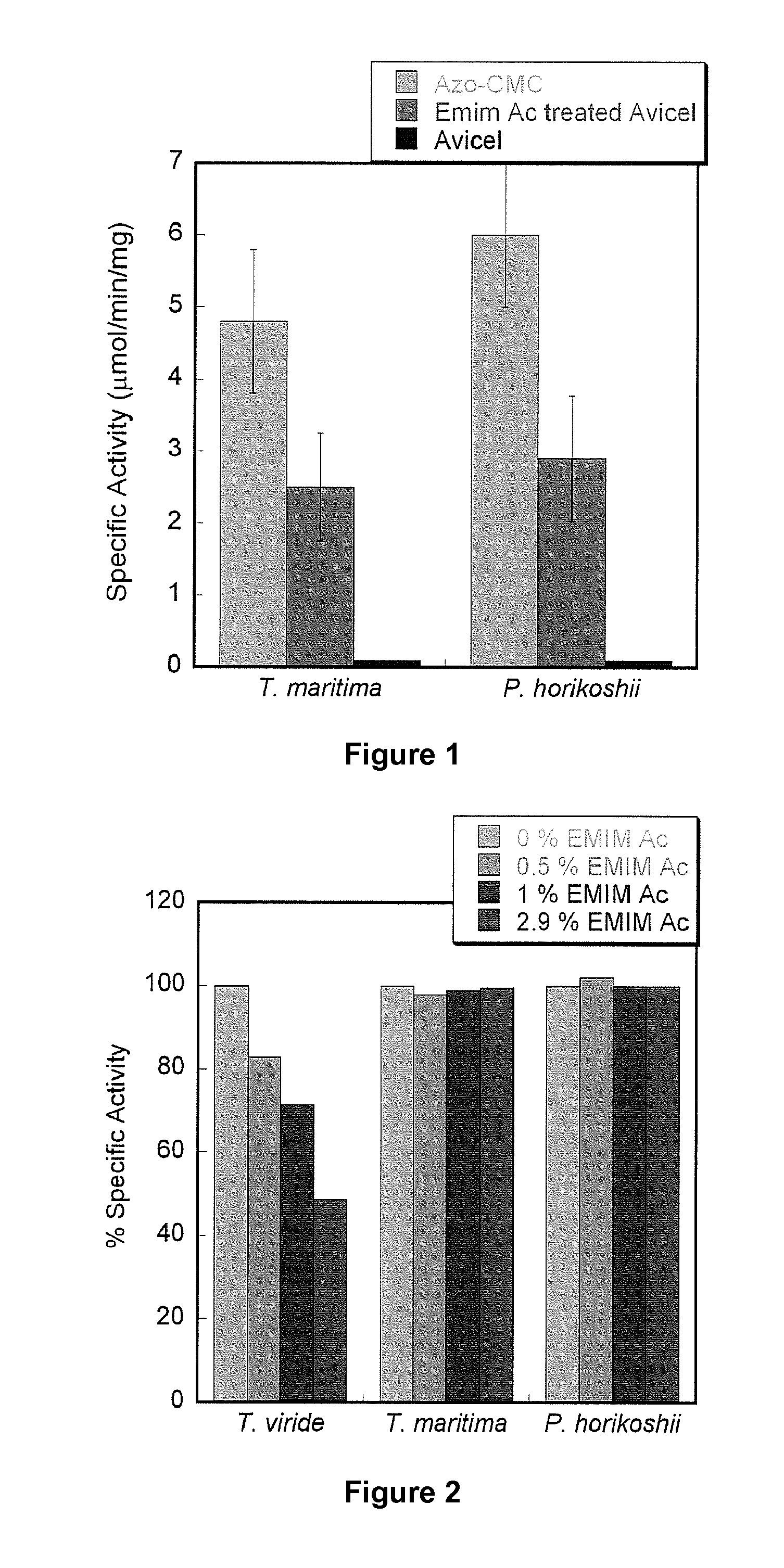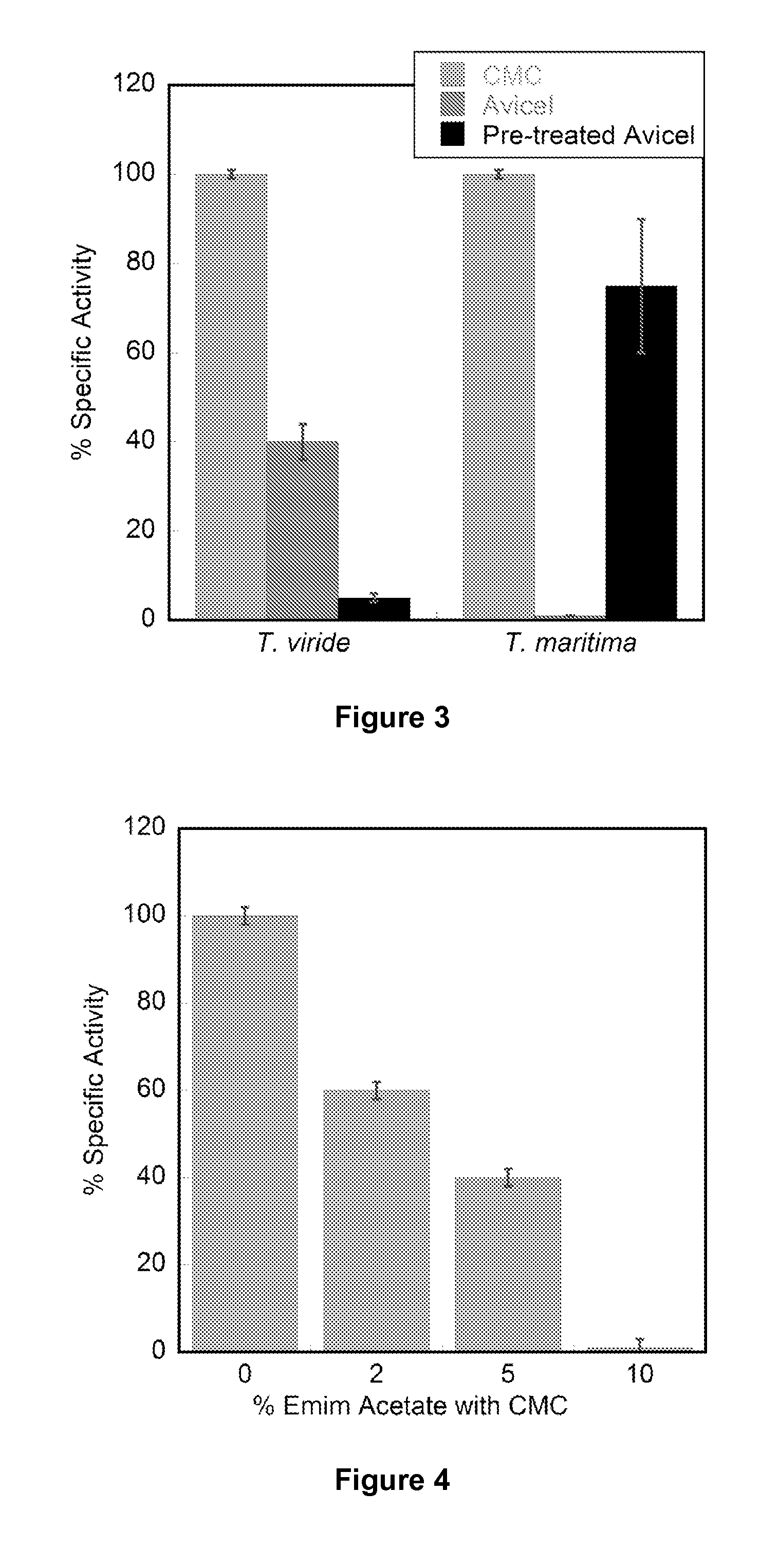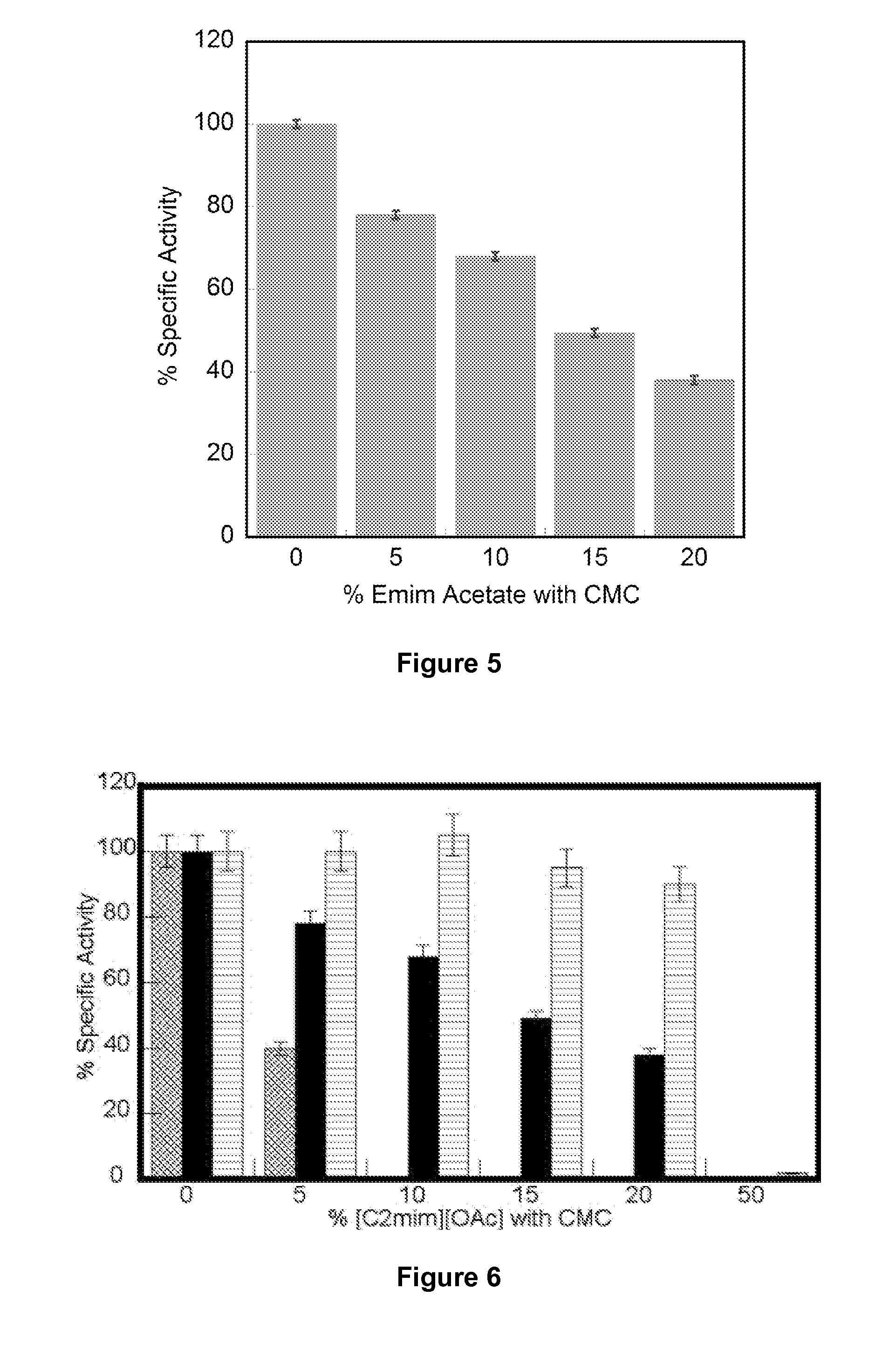Thermostable cellulases, and mutants thereof, capable of hydrolyzing cellulose in ionic liquid
- Summary
- Abstract
- Description
- Claims
- Application Information
AI Technical Summary
Benefits of technology
Problems solved by technology
Method used
Image
Examples
example 1
Thermostable Cellulases have Unchanged Enzymatic Activity in Up to 2.9% IL
[0153]Enzymatic hydrolysis is the rate limiting step in the fermentation of biomass to sugars. The main barrier is the highly crystalline structure of cellulose that limits accessibility to enzyme adsorption sites and slows the hydrolysis of cellulose to sugars in aqueous media. To increase enzyme accessibility, a combination of high temperature and extremes of pH are used during common pretreatment steps like dilute acid or ammonia fiber explosion. IL are a new class of environment friendly, non-volatile solvents used in the pretreatment of cellulosic biomass. IL's have been shown to dissolve cellulose which can be recovered in the amorphous form by the addition of antisolvents like water. However, significant decreases in cellulase activity in the presence of trace amounts of IL's have been reported in literature, necessitating extensive processing to remove residual IL's from the regenerated cellulose. To s...
example 2
Cellulase Enzymatic Activity Assay on Soluble Substrates
[0155]Enzymatic activity is measured on soluble polysaccharide substrates, CMC, using the dinitrosalicylic acid reducing sugar assay. Briefly, CMC (2% w / v) in 120 μA acetate buffer, (100 mM, pH 4.8) is incubated with enzyme at 80° C. for 30 minutes for Tma and 37° C. and 10 minutes for T. viride. The solution is cooled down to 4° C. and 80 μL of DNS solution is added. The reactants are incubated at 95° C. for 5 minutes and cooled down to room temperature before the absorbance is read at 540 nm. The reducing sugar concentration in the sample is calculated from its absorbance using the standard curve of D-glucose. All experiments are run in triplicate.
example 3
T. martima Endoglucanase is More Tolerant to IL Compared to T. viride Cellulase
[0156]The recombinant endoglucanase from the extremophile T. maritima is more tolerant to ionic liquids compared to the commercially available T. viride cellulase (Sigma). Increasing concentrations of IL destabilize protein secondary structures and lead to decreased catalytic efficiencies.
TABLE 2T. viride Tm decreases with higher EMIM Acetate concentration.% EMIM AcetateMelting Temp. (° C.)Δ Tm065.2—258.96.3555.49.81049.515.7
TABLE 3T. maritima Tm decreases with higherEMIM Acetate concentration.% EMIM AcetateMelting Temp. (° C.)Δ Tm0108—51017109810159315208919
TABLE 4Correlation of drop in Tm with specific activity.% EMIM% SpecificMeltingENZYMEAcetateActivityTemp. (° C.)T. viride010065.2cellulase24058.956055.410049.5T. maritima0100109endoglucanase577101106598155093204589
TABLE 5Correlation of drop in Tm with specific activity.% EMIM% SpecificMeltingMelting Temp.ENZYMEAcetateActivityTemp. (° C.)Decrease (° C....
PUM
| Property | Measurement | Unit |
|---|---|---|
| Temperature | aaaaa | aaaaa |
| Temperature | aaaaa | aaaaa |
| Fraction | aaaaa | aaaaa |
Abstract
Description
Claims
Application Information
 Login to View More
Login to View More - R&D
- Intellectual Property
- Life Sciences
- Materials
- Tech Scout
- Unparalleled Data Quality
- Higher Quality Content
- 60% Fewer Hallucinations
Browse by: Latest US Patents, China's latest patents, Technical Efficacy Thesaurus, Application Domain, Technology Topic, Popular Technical Reports.
© 2025 PatSnap. All rights reserved.Legal|Privacy policy|Modern Slavery Act Transparency Statement|Sitemap|About US| Contact US: help@patsnap.com



